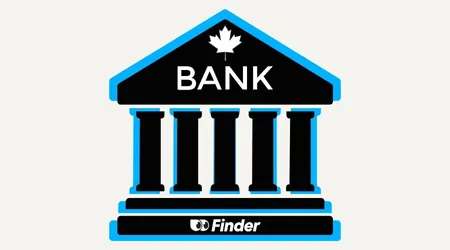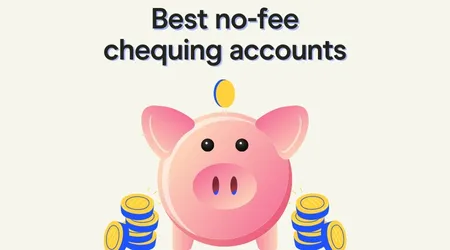Will a bank refund an unauthorized transaction in Canada? While provider policies can vary, you’re often entitled to a refund if there are unauthorized transactions on your debit card, provided certain conditions are met. Keep reading to learn the steps you can take to get a refund, what you should do if you notice fraudulent activity and how to prevent fraudulent charges in the future.
Will a bank refund unauthorized transactions in Canada?
Yes, Canadian banks typically refund unauthorized transactions because most financial institutions follow the Canadian Code of Practice for Consumer Debit Card Services. While this code is voluntary, all federally regulated banks have adopted it and the Financial Consumer Agency of Canada (FCAC) monitors their compliance.
The code states that banks are required to investigate unauthorized debit transactions and reimburse customers for their losses if they took reasonable care to protect their card and PIN and reported the issue within a specified time frame (typically within 30 days of the statement date).
All federally regulated financial institutions must have a complaint-handling procedure in place, so check your bank’s policies and report any unauthorized transactions as soon as possible to get a refund.
 The 4 steps to get a refund on debit card fraud
The 4 steps to get a refund on debit card fraud
If you’re the victim of debit card fraud, you’ll most likely be able to get your stolen money refunded by following these steps.
Step 1: Gather any documentation
You should first gather together any documents proving that you’re the victim of debit card fraud, which you can then pass on to the merchant and bank when you make your claim. Acceptable proof documentation can include copies of receipts, account statements and your own notes on how and when you noticed the unauthorized transaction. If you’ve previously spoken to the merchant, get copies of any documentation between you and the merchant, including emails and chat history.
Step 2: Contact the merchant or website
It’s important to first contact the merchant where the fraudulent transaction took place so that it can verify the transaction details. Especially if the unauthorized transaction was done online, it might be as easy as a technological error causing an accidental overcharge, which can be easily refunded. If the merchant cooperates with you, it could mean less hassle later, especially if you tell them that you’re putting in a claim with your card provider.
Step 3: Contact your card provider
Your provider will likely have a claims process in place, so follow any instructions they set out. In most cases, you can start by calling your bank’s customer service number or going to talk to someone at a branch. It’s best to start the claims process as soon as you’ve realized you can’t get your money back any other way.
Step 4: Keep an eye on your accounts
As your card provider or merchant is investigating your claim, you should continue to monitor your account. Hopefully, the protection measures your bank put in place, like deactivating your debit card, will prevent any further unauthorized transactions, but it’s still important to be careful. Check all of your bank accounts, debit card statements and credit report over the next several months for suspicious activity.
In most cases, getting a new debit card will be enough to stop any future fraudulent charges. However, if you continue to see multiple unauthorized charges, and depending on the results of your bank’s claims investigation, you may need to file a police report.
Do banks refund scammed money?
Banks aren’t obligated to refund scammed money because, in many scams, victims typically authorize the payment. For example, they may send money to a fake seller or invest in a fraudulent scheme. So, if your financial institution investigates the transaction and finds you at fault, they’re not legally required to refund your scammed money.
If you fall victim to a scam, you should still contact your bank immediately, as it may be possible to freeze or recover the funds if the transfer hasn’t cleared yet.
Types of debit card fraud
There are several different ways a fraudster could get your debit card information:
- Skimming device. The scammer can attach a skimming device to an ATM, gas pump or anywhere else you swipe your card and steal information from your card’s magnetic strip.
- Hacking a retailer’s online system. Hackers can gain illegal access to companies you’ve shopped at in the past and steal your information. They can also steal this information if you shop online at sites that don’t have a secure connection.
- Stealing your physical card. A stranger, family member, disgruntled employee or anyone else could steal your physical debit card when you’re not looking and use it for purchases.
- Phishing. This happens when a fraudster tricks you into thinking you’ve received a legitimate email from someone you trust, so you provide personal information.
- Intercepting mail. Scammers could steal your debit card out of your mailbox — before you’ve even had time to realize it’s there — and then use it to make fraudulent purchases.
Debit card fraud: Know your rights
If someone makes unauthorized transactions using your debit card, it’s important to know your rights so you can get a refund. Here’s what the Financial Consumer Agency of Canada has to say.
Zero liability for unauthorized losses
If you took reasonable precautions to protect your PIN and account information, Visa, Mastercard, Interac and American Express will typically reimburse you in full. This covers use in stores, at ATMs, online or via point-of-sale terminals.
Situations beyond your control, like technical malfunctions or fraud after you’ve reported your card lost or stolen, don’t result in liability.
You can access the zero liability policies of popular card providers using the links below:
Right to a full investigation
If you dispute a transaction, federally regulated financial institutions must fully investigate, regardless of how the transaction occurred. They must also consider all relevant circumstances that could have contributed to the unauthorized use, such as technical errors, coercion and “shoulder surfing,” where someone observes you enter your PIN.
Time limits for disputes
Most financial institutions set a time frame for disputes, typically 30 days after the date of your statement. If you dispute an unauthorized transaction outside of the set time limit, you likely won’t get a refund.
Your responsibilities
To ensure you’re fully protected and receive a refund for unauthorized transactions, you must:
- Report lost or stolen cards
- Notify your card issuer of unauthorized or suspicious transactions immediately
- Keep your PIN confidential
- Avoid choosing a PIN that’s easy to guess
- Use different PINs for different accounts and cards
If you fail to fulfill these responsibilities, you may be found partially or fully liable for unauthorized losses and won’t receive a refund.
What to do if you’ve been scammed
- Contact your bank immediately. Call your bank’s fraud department as soon as you notice suspicious activity and ask them to freeze or close your account to prevent more transactions.
- Change all your passwords. To avoid further scams, change all your financial passwords. When you get your new debit card, be sure to change your PIN as well.
- Report the fraud. Notify the police, Canadian Anti-Fraud Centre, Canada Revenue Agency (CRA) and credit bureaus to create an official record of the crime, alert tax authorities to stop potential identity misuse and protect your credit by flagging suspicious activity.
- Document everything. Keep records of all communications with your bank, including times, dates and the names of the representative you speak with. Save bank statements, screenshots and emails related to the scam as well to help with the investigation and protect yourself from potential disputes.
- Follow up with your bank. It can take several business days to investigate fraud, but your bank should update you on the status of your claim. If the bank refuses to refund you and you disagree with the decision, you can escalate the case to an ombudsman like the Ombudsman for Banking Services and Investments (OBSI). An ombudsman will review your complaint, investigate fairly and try to find a resolution that’s acceptable to both parties.
- Consider a new bank. If you’re not happy with how your financial institution handled the scam, you may want to consider finding a new one. Review our list of the best new bank account offers to find one that suits your needs.
How to avoid debit card fraud
The best way to deal with debit card fraud is to prevent it from happening in the first place. Follow these steps to keep your debit card and financial information safe:
- Store your debit card in a secure location. Don’t leave your debit card lying around or keep it in an open pocket.
- Don’t write down your PIN. Memorize your PIN so you don’t have any written copies of your PIN number.
- Use a PIN number that’s difficult to guess. Avoid using your birthday or phone number.
- Don’t give out your debit card or PIN number. Even if you trust the person you want to give your card to, they may not be as careful with it as you would be.
- Try to hide your PIN. Use your body or the other hand when entering your PIN at the debit terminal.
- Keep a close eye on your debit card anytime you’re using it. Some people may try to distract you in order to steal your card.
- Monitor your account statements often to check for any suspicious activity.
- Set up account alerts to get notified each time you make a transaction over a certain limit.
- Make sure your network is secure when shopping online by checking for the green padlock symbol next to the URL. This ensures you’re using a secure site, which encrypts your data and lowers your chances of having your information stolen.
- Shred paper statements. If you still get paper statements, make sure you dispose of them properly by shredding them. That way, no one can dig through your trash and steal your financial information.
- Disable overdraft protection. When overdraft protection is enabled, your bank may transfer money from your savings account once your checking balance hits $0. This means that a fraudster could drain both of your accounts if they continuously overdraw on your account without you knowing.
Are credit cards safer than debit cards?
With the rise of identity theft and fraudulent transactions, more people are shying away from debit cards and relying on credit cards because they’re worried about security. But the best banks in Canada typically offer debit cards with a zero liability guarantee, which protects consumers against any fraudulent transactions, and microchip technology — so security shouldn’t be your main worry.
Many people opt to use a credit card over a debit card because when someone illegally uses your credit card, they’re stealing money from a financial institution, not from you. As a result, the financial institution works really hard to get its money back. But when your debit card is used illegally, money is stolen directly from your account. It usually takes longer to dispute the charges, and your dollars are on the line if you can’t get your money back.
How do financial institutions investigate unauthorized transactions and fraud?
After you report the unauthorized transaction or fraud, financial institutions may follow these steps to investigate:
- Gather information. Your financial institution may ask for details like the transaction date, amount, merchant information and any support documentation you can provide, such as receipts.
- Verification with the merchant. Then, it may contact the merchant or payment processor to confirm transaction details and check if the transaction was legitimate or potentially fraudulent.
- Review of account activity. The financial institution will then review your recent account activity for other suspicious transactions or patterns that might indicate fraud.
- Assessment of customer responsibility. If negligence is found, you may not be eligible for a refund.
- Decision and communication. Once the investigation concludes, you’ll be informed of the result. If the transaction is deemed unauthorized, you should receive a refund.
Bottom line
Many banks offer debit cards backed by zero liability policies that protect you from unauthorized purchases and allow you to get a refund. But this isn’t a catch-all solution for fraud, because you may be found liable or limited in the amount of time you have to recognize a fraudulent purchase and make a claim.
Not all card issuers offer such a guarantee, and those that do have different policies, so you need to check with your issuer to find out exactly what type of coverage you have.
Frequently asked questions
Sources
More guides on Finder
-
Best virtual debit cards in Canada
Your guide to the best virtual debit cards in Canada, how they work, and their pros and cons.
-
Wise Card review
Get competitive exchange rates and pay no foreign transaction fees when you spend money internationally with this fee-free debit card.
-
Scotiabank debit card (with the Preferred Package) Review
Use this versatile Scotiabank Debit Card to earn points and make purchases online.
-
RBC debit card review
Apply for a debit card with this Big Five bank to make purchases online or in-store directly from your bank account.
-
How to use a debit card online
It’s a straightforward and convenient process to use your debit card online, but paying with a credit card may be safer.
-
Top 14 reasons your debit card was declined
Take preventive measures to avoid having to worry about your debit card being declined.
-
4 best international debit cards for travel
Make sure you have one of these debit cards before you travel overseas.
-
PayPal and your debit card
Linking your debit and credit card to your PayPal account can save you time when shopping online. Here’s how.
-
Debit card service fees
Convenience fees can apply to debit card transactions as well as credit card payments, but only a small number of select merchants can legally charge them in Canada.







